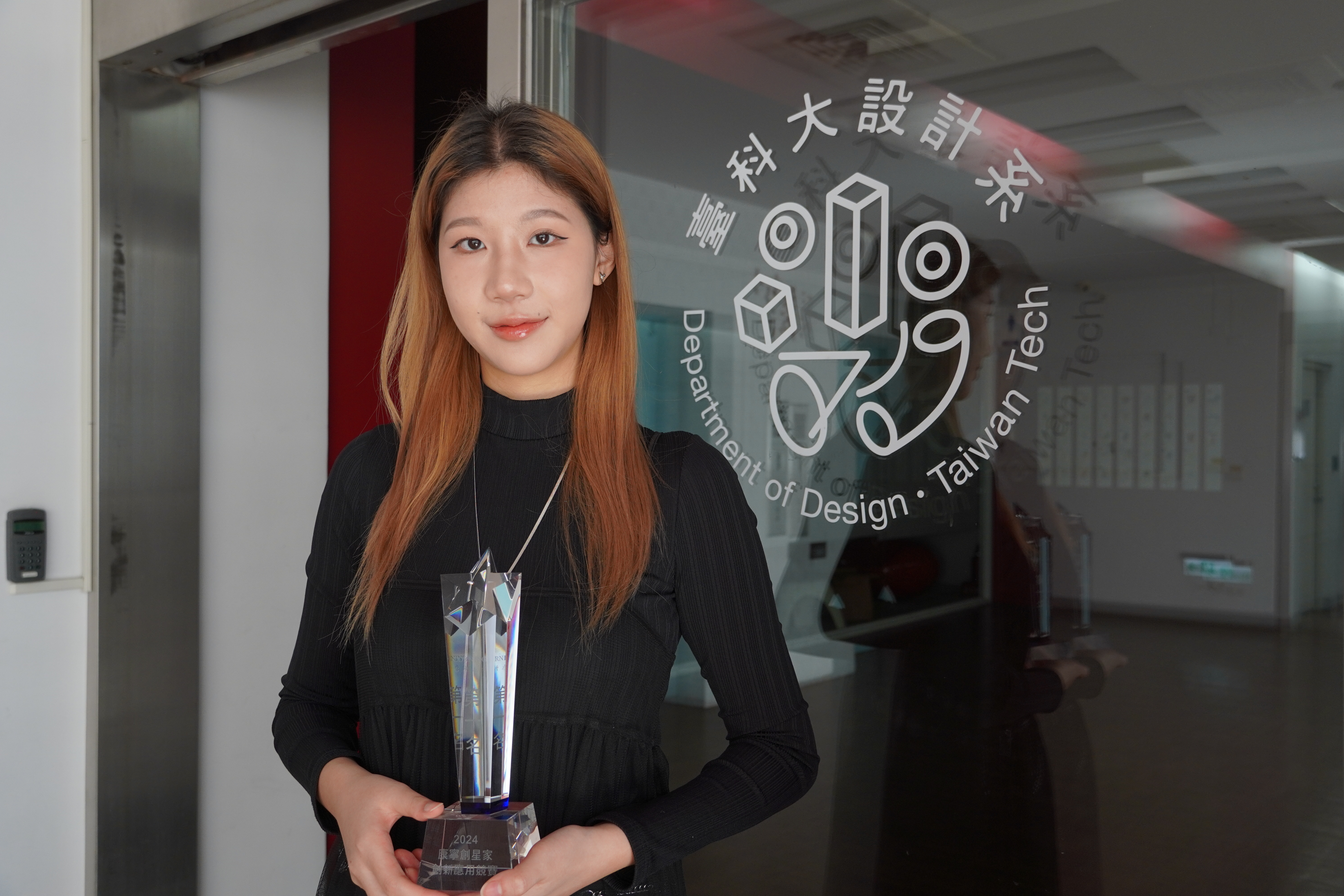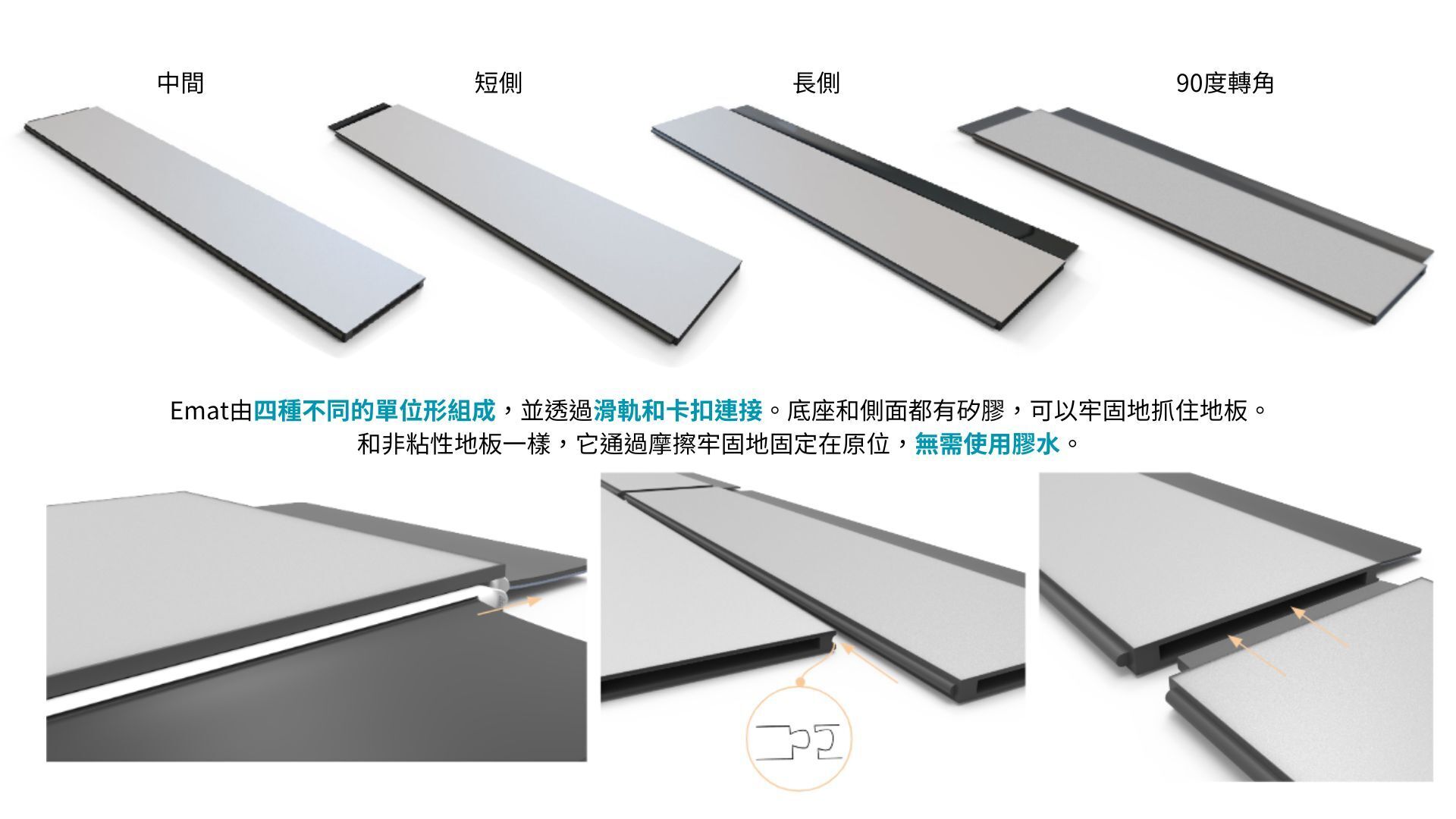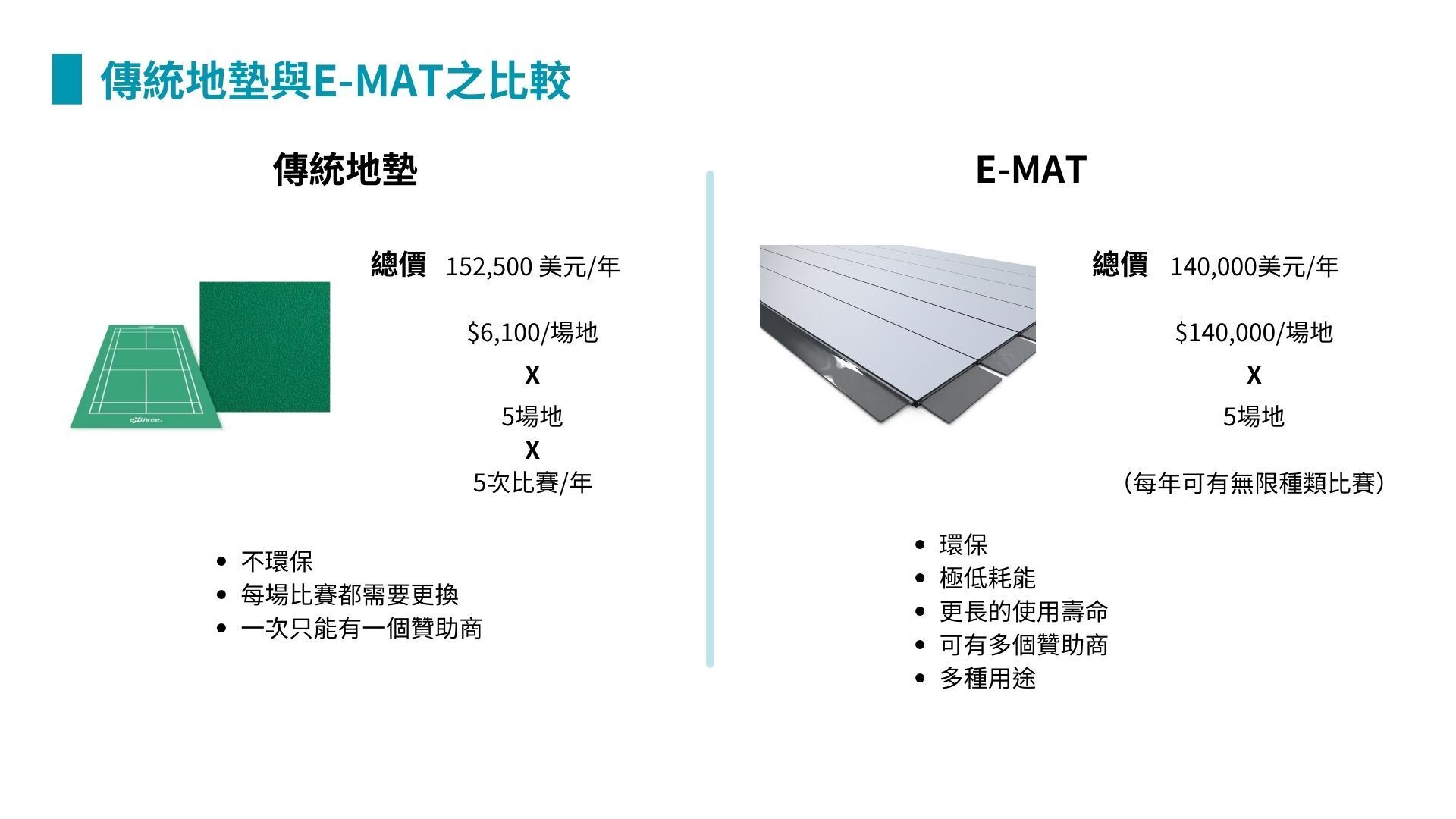Taiwan Tech students won Corning Future Innovator Award for dadminton electronic mat design.
A first year master's student from Department of Design at Taiwan Tech, Hsiang-Ting Huang, recognizing the significant environmental issues with traditional badminton court mats, designed an electronic mat (E-mat) using E-Ink technology to replace conventional PVC mats. She won the Corning Future Innovator Award in December 2024.

A first year master's student from Department of Design at Taiwan Tech, Hsiang-Ting Huang, won the Corning Future Innovator Award in December 2024 for designing an electronic mat using E-Ink technology to replace traditional PVC mats.
Hsiang-Ting Huang explained that due to different sponsors for each badminton match, the mat's color and logo need to be frequently changed, resulting in a very short lifespan, sometimes lasting only one or two days. The mats are mainly made of PVC, each measuring 15x7.2 meters and weighing around 400 kg, which includes 400 kg of PVC. Recycling PVC is difficult and it causes severe pollution.
She pointed out that E-Ink is a low-power display technology commonly used in e-readers. By controlling the movement of particles with an electric field, the content is displayed. Once the content is fixed, it uses almost no power, and the display remains clearly visible even without power. Her designed electronic mat comes in three types: central, edge, and corner, allowing users to select the required number based on the court size and easily assemble them by simple connections.

The electronic mat designed by Hsiang-Ting Huang is made up of four different unit shapes, which are connected through sliding rails and clasps.
Taking Taipei Arena as an example, which hosts about five major events annually, each requiring five mats, the use of electronic mats can enhance event flexibility. For spectators, it allows for the display of individual lines, doubles lines, the ball's landing, and the server's position. For sponsors, their logos can be displayed during the match or halftime break.
Hsiang-Ting Huang believes that electronic paper is already widely used in daily life, such as in road signs, bus stop signs, and vehicle graphics and color changes. The NBA also introduced LED floors in 2024 to enable player interaction. However, LED technology consumes a lot of energy and has overly strong lighting, making it unsustainable. In contrast, E-Ink technology is low-energy and suitable for long-term, stable display, offering significant potential for promotion. She believes that the widespread use of electronic mats in the future is highly feasible. The electronic mat consumes minimal energy while delivering maximum commercial benefit, not only solving environmental issues associated with traditional mats but also enhancing event flexibility and the spectator experience, bringing a new era of sustainable development to badminton.

The electronic mat designed by Hsiang-Ting Huang achieves maximum commercial benefit with minimal energy consumption. It not only solves the environmental issues of traditional mats but also enhances event flexibility and the spectator experience, introducing a new model of sustainable development for badminton.
The Corning Future Innovator Competition in 2024 attracted 297 teams, comprising over 730 students from 39 universities across Taiwan. The theme, “Innovate for Sustainability, Transform the Future”, invited participants to envision a sustainable lifestyle for the next decade. The submissions covered various aspects of sustainable development, including renewable energy, circular economy, and smart agriculture.